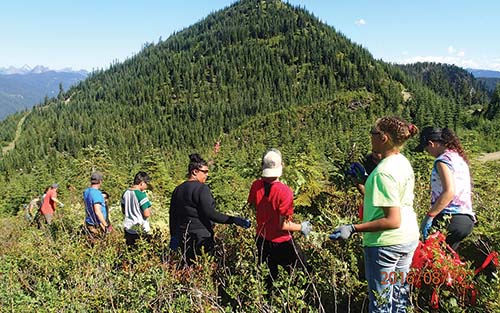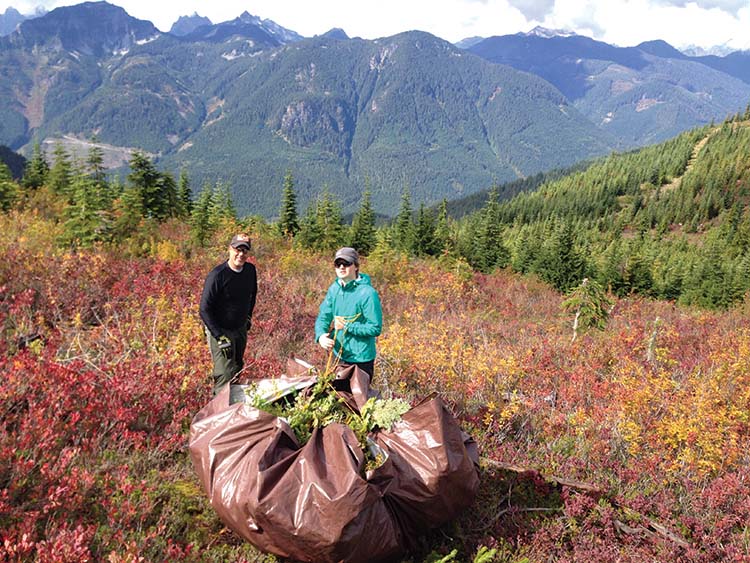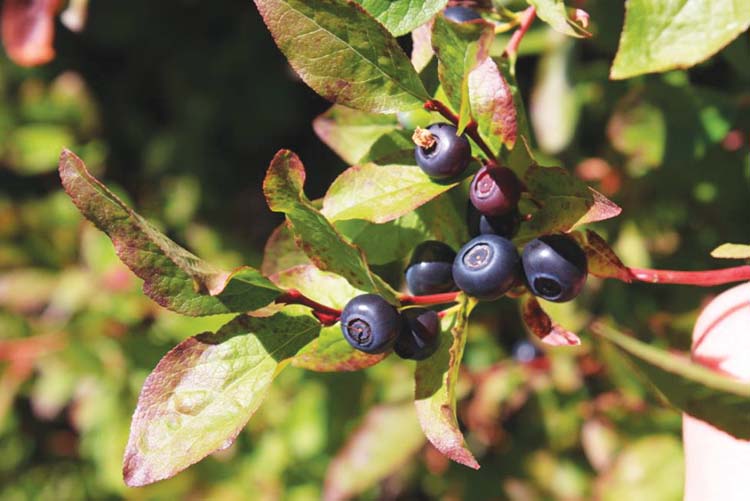
By Micheal Rios, Tulalip News
Back in May, the Tulalip Tribes and the U.S. Forest Service signed a 10-year co-stewardship plan for swədaʔx̌ali. For those who may not remember, σωəδαʔξ̌αλι or “Place of Mountain Huckleberries” is a 1,280-acre parcel in Tulalip ancestral lands in the upper Skykomish watershed. This particular location is one of several co-stewardship areas throughout the Mt. Baker-Snoqualmie National Forest where the Tribes are collaborating with the Forest Service to preserve and maintain important cultural resources. The Huckleberry Enhancement Project is the latest initiative to come about as a result.
The Huckleberry Enhancement Project aims to restore and enhance the swədaʔx̌ali area, allowing Tulalip tribal members to continue exercising their treaty rights. This area is one example of how the Tulalip Tribes is working to reclaim traditional areas. The co-stewardship with the National Forest Service stems directly from the Point Elliot Treaty, which secured claims to gathering roots and berries in all open and unclaimed land.
“The huckleberry co-stewardship work is one of the ways we are partnering with the Mt. Baker-Snoqualmie National Forest to help sustain huckleberries on the forest, and ensure that tribal members will continue to have the opportunity to gather important resources and practice traditions central to their culture,” says Libby Nelson, Project Coordinator and Tulalip Environmental Policy Analyst. “Treaty rights encompass more than an opportunity to pick berries, hunt game or harvest fish. Having a meaningful role on the ground, in the stewardship of these resources, helps reconnect tribal peoples to these lands and the teachings of their ancestors.”
Indeed, reconnecting tribal peoples to these lands is a significant point of emphasis. That is why the work in our 10-year co-management plan was initiated this past August by the Tulalip youth who participated in Mt. Camp 2016. The energetic youth worked under the diligent supervision of Tulalip Forestry staff to remove conifers that diminish opportunities to gather huckleberries.
Since the youth kicked off the project, our Forestry Division staff worked two very long weeks in the mountains reducing the stocking of trees in the area. By reducing trees stocks, the huckleberry plants are able to prosper in areas they would have otherwise been shaded-out and killed. During the two-week window of intensive work, Forestry received welcomed help from different Natural Resource Department divisions who stepped up and spent a day or two in the field helping out.
“Now that the first year’s huckleberry field enhancement efforts are completed it’s very satisfying to know that all the years of planning and a couple weeks of hard labor will enable current and future generations to enjoy harvesting huckleberries in this beautiful setting for many years to come,” state Tulalip Forestry staff members Nick Johnson and Ross Fenton in a joint statement. “We’ve been able to participate in a collaborative effort to successfully mimic conditions historically managed by Native Americans and nature. By using methods to preserve the productive capacity of this area, it will continue to produce important food and medicine for the Tribes.”
Northwest huckleberries are generally picked in the late summer/early fall seasons, and grow in the damp areas of mountains. The huckleberry, known for boosting the immune system, has always had a strong relationship to the indigenous peoples of the northwest. Coastal Native American ancestors considered the huckleberry to be of the utmost importance because of the medicine the plant contains.
“Huckleberry is a food and medicine to our people. Our ancestors visited certain areas for gathering these berries. They knew where the berries were growing, and what companion plants were growing there too and how to use them,” says Inez Bill, Rediscovery Program Coordinator. “Through the teachings of how we value, take care of and utilize our environment, we pass down our history and traditions, and what is important to the cultural lifeway’s of our people. This connection to the land enables us to know who we are as a people. It is a remembrance. Today, it is not only important that we continue the struggle to uphold our treaty rights, but we need to be involved in taking care of those resources our culture depends on so that they will be available for our future generations.”
The swədaʔx̌ali area, while co-managed by Tulalip and the U.S. Forest Service, remains open to public access as part of the Mt. Baker-Snoqualmie Forest. The Forest Service has worked with Tulalip through our MOA to ensure treaty access beyond a locked gate so that elders and other tribal members can more easily get to the berry patch during picking season. This access has been managed by our Forestry Division on behalf of the tribal membership.
There is a serious need to bring awareness while sharing the significance of swədaʔx̌ali to the Tulalip citizenry. These places of co-stewardship are open to all of Tulalip, but there aren’t many who know how to access them, or that they even have these resources available to them. As Inez reiterates, “This work at swədaʔx̌ali is an expression of Tulalip’s sovereignty regarding our foods, and our commitment to support the dietary needs and the life ways of our people.”
For those who would like to know more about this area, please contact Tulalip Treaty Rights Office at 360-716-4639 or Tulalip Forestry at 360-716-4370.


